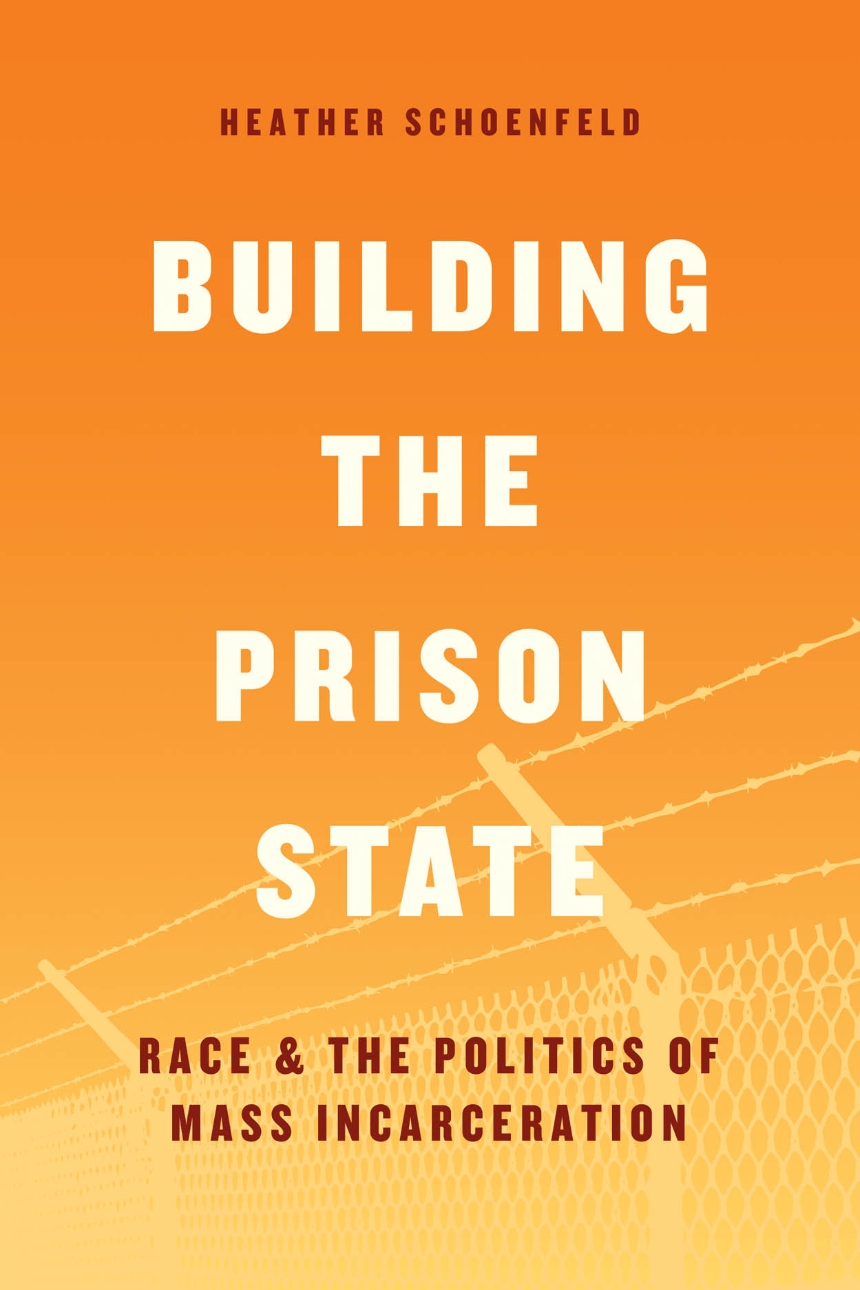Building the Prison State
Race and the Politics of Mass Incarceration
The United States incarcerates more people per capita than any other industrialized nation in the world—about 1 in 100 adults, or more than 2 million people—while national spending on prisons has catapulted 400 percent. Given the vast racial disparities in incarceration, the prison system also reinforces race and class divisions. How and why did we become the world’s leading jailer? And what can we, as a society, do about it?
Reframing the story of mass incarceration, Heather Schoenfeld illustrates how the unfinished task of full equality for African Americans led to a series of policy choices that expanded the government’s power to punish, even as they were designed to protect individuals from arbitrary state violence. Examining civil rights protests, prison condition lawsuits, sentencing reforms, the War on Drugs, and the rise of conservative Tea Party politics, Schoenfeld explains why politicians veered from skepticism of prisons to an embrace of incarceration as the appropriate response to crime. To reduce the number of people behind bars, Schoenfeld argues that we must transform the political incentives for imprisonment and develop a new ideological basis for punishment.
352 pages | 3 halftones, 13 line drawings, 4 tables | 6 x 9 | © 2018
Chicago Series in Law and Society
History: American History
Law and Legal Studies: Law and Society
Reviews
Table of Contents
List of Figures and Tables
Chapter 1. A New Perspective on the Carceral State
Chapter 2. Penal Modernization in the Civil Rights Era, 1954–1970
Chapter 3. Prison Overcrowding and the Legal Challenge to Florida’s Prison System, 1970–1980
Chapter 4. The Unintended Consequences of Prison Litigation, 1980–1991
Chapter 5. The Politics of Early Release, 1991–1995
Chapter 6. Republicans, Prosecutors, and the Carceral Ethos, 1995–2008
Chapter 7. Recession-Era Colorblind Politics and the Challenge of Decarceration, 2008–2016
Chapter 8. Toward a New Ethos
Acknowledgments
Appendix
Abbreviations
Notes
Selected Bibliography
Index
Chapter 1. A New Perspective on the Carceral State
Chapter 2. Penal Modernization in the Civil Rights Era, 1954–1970
Chapter 3. Prison Overcrowding and the Legal Challenge to Florida’s Prison System, 1970–1980
Chapter 4. The Unintended Consequences of Prison Litigation, 1980–1991
Chapter 5. The Politics of Early Release, 1991–1995
Chapter 6. Republicans, Prosecutors, and the Carceral Ethos, 1995–2008
Chapter 7. Recession-Era Colorblind Politics and the Challenge of Decarceration, 2008–2016
Chapter 8. Toward a New Ethos
Acknowledgments
Appendix
Abbreviations
Notes
Selected Bibliography
Index
Awards
American Association for State and Local History (AASLH): Award of Excellence
Won
